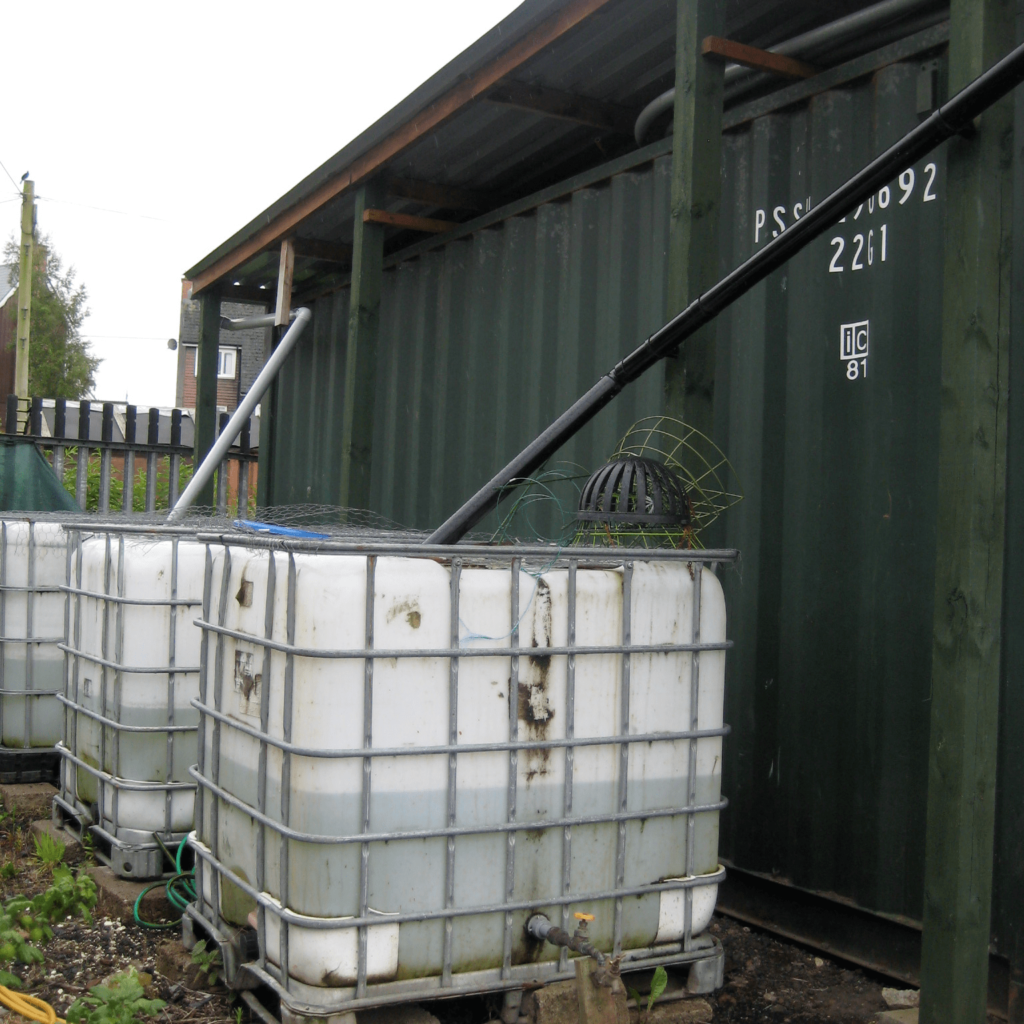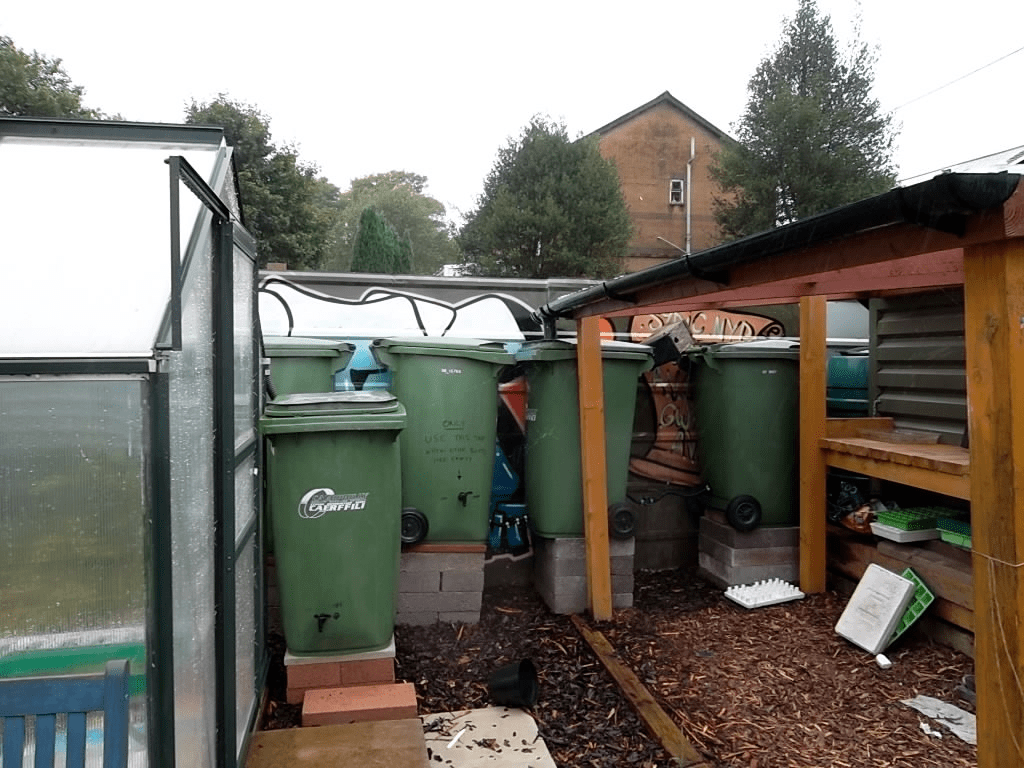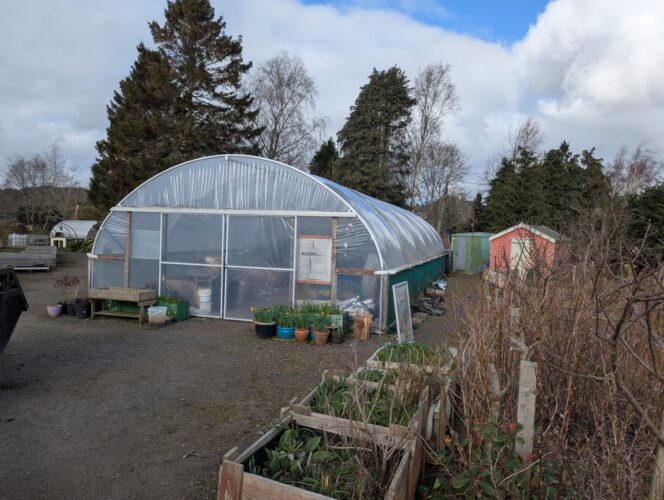Water Wise
to grow more food
If you are new to growing, or looking to grow more food one key component to consider is water. Growing under cover during the summer months requires a huge amount of it to keep our plants thriving and our plates full. While we can’t control the weather, we can make the most of what nature provides.
These pages aim to get you thinking about how simple to sophisticated rainwater catchment systems can help collect this free—and sometimes abundant!—resource. By doing so, we can reduce our food’s environmental footprint and be better prepared for the unpredictable weather ahead.
Many of us rely on energy-intensive tap water while getting set up or during dry spells. But when water falls from the sky for free, why not collect it? Across Scotland, growing groups use a variety of systems to suit different scales of food production. The Tayport story shares one community’s learning journey.
If you’re just starting out, here are a few tips to help you get going:


Water use tips
Soil with plenty of organic matter is key to managing extreme weather conditions.
Watering is a learned art- getting it just right can vary considerably on your growing conditions, crop and above all soil type.
Insufficient watering early in the growing season will mean some plants ‘bolt’, and go to seed early but, over watering deprives the roots from air and the young plant begins to rot.
Plants grown under cover and young seedlings or plants need regular watering, most other plants can wait for rain, overwatering them prevents them developing deep roots that help them become self -sufficient.
Take care to water the soil around the base of the plant to avoid wasting water.
Plant more herbs, such as lavender, rosemary, sage, and thyme. These plants can withstand dry periods and are great for bees.
Resist the temptation to water flowers unless they start to wilt, and save water for your veggies.
Mulch, mulch, mulch wherever and whenever possible.
In a communal setting, take time to communicate an agreed approach to water use, this isn’t about being perfect, but doing your bit.
Tell visitors or friends about your water wise approach so they can try it out. Combined small actions can make a big difference.
Safety considerations
Rainwater is generally safe for non-potable users such as watering plants and tools but in a public settings there are a few things that require further consideration to maintain confidence levels and keep everyone safe:
Clear signage to visitors and garden users that this water is not for drinking or hand washing is advisable.
When re using old bins, industrial bulk containers and other containers be sure you are aware of their previous use to avoid contamination.
Regularly maintain guttering and roofing to keep free from potential contaminants.
Cover open containers to prevent mosquitos and other wildlife from falling in.
Wherever possible avoid opaque containers to prevent the build up of algal growth which will clog any drip feed system you have.
In periods of continuous hot summer weather there can be a small risk of legionella. Risks can be mitigated in a number of ways- site contianers out of direct sunlight, ensure they are used regular to prevent water stagnating, don’t leave any pipe system lying inside a warm sunny greenhouse where bacteria can thrive.
See the Resource section below.

-
Read more: Tayport water wise

Tayport water wise
Resources
- Community Learning Exchange – visit and learn directly from others about their approach.
- Charitable Water Charges Exemption Scheme
- Water hygeine centre